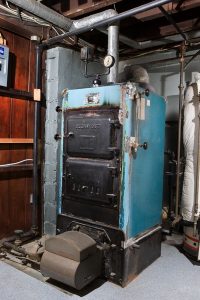Your home’s furnace plays a pivotal role in your overall comfort and well-being. Being the essential resource that it is, it’s also something that necessitates a great degree of value and prioritization. Supporting your furnace is an essential practice in bolstering your home’s heating, as by doing so you can properly identify and mitigate issues that could end up costing you time, money, and peace of mind.
In this regard, it’s a common intent among homeowners to know how to assess their furnace’s performance, so as to ensure it’s functioning to the best of its capacity year-round.



 Heating a home in Florida during our mild winters is a bit of a juggling act. We don’t need our heating systems to run every day, through most of the day, as in a cold northern state where the weather is routinely below freezing. We’ll need our heaters on certain occasions and run them long enough to keep away the cool chill of days that are in the 50s. This makes it easy for a heater to get a house
Heating a home in Florida during our mild winters is a bit of a juggling act. We don’t need our heating systems to run every day, through most of the day, as in a cold northern state where the weather is routinely below freezing. We’ll need our heaters on certain occasions and run them long enough to keep away the cool chill of days that are in the 50s. This makes it easy for a heater to get a house  Before we go further in this post, we want to be clear:
Before we go further in this post, we want to be clear:  The air filter for your HVAC system is a critical component for it to operate well. It isn’t there to clean your household air but to protect the interior of the cabinet from all the dust, lint, and other particles the blower fan draws in through the return air ducts.
The air filter for your HVAC system is a critical component for it to operate well. It isn’t there to clean your household air but to protect the interior of the cabinet from all the dust, lint, and other particles the blower fan draws in through the return air ducts. If you’re asking this question, then you’re doing a good job of paying attention to the behavior of your home’s heating system. Detecting early indications of malfunctions in a heater is essential to ensuring you arrange for repairs to fix the problem when it’s still small and to avoid potential health hazards. Odd sounds, strange smells, high bills—all are warnings you may need professional service for your
If you’re asking this question, then you’re doing a good job of paying attention to the behavior of your home’s heating system. Detecting early indications of malfunctions in a heater is essential to ensuring you arrange for repairs to fix the problem when it’s still small and to avoid potential health hazards. Odd sounds, strange smells, high bills—all are warnings you may need professional service for your